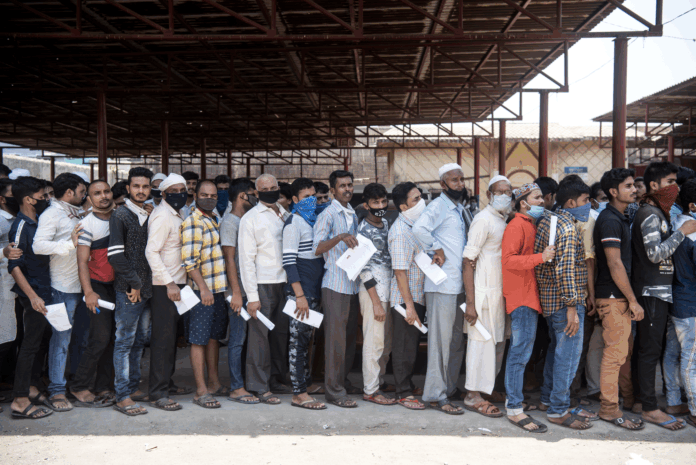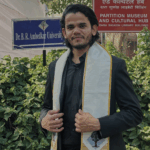For many, the promise of India’s cities sparkles with hope. Rural migrants leave behind their homes and villages in search of something more secure: better wages, some protection against hunger, and the possibility of dignity through work. For others, migration is not a choice but a compulsion from escaping family violence, early losses, or sheer abandonment. Women often migrate alongside their husbands or families, not always from desire but necessity. In these urban spaces, they carry the weight of isolation, alienation, and often crushing loneliness. What begins as the pursuit of survival frequently turns into a descent into despair.
Who Migrates and Why They Suffer
Migration is rarely a simple economic decision. For many men, the search for wages is inseparable from the pressure of family expectations, the memory of childhood losses, or the shame of having nowhere else to turn. Women migrate too, often as dependents of their husbands, uprooted from familiar social networks, placed in cities that feel alien and cold. The irony is cruel: the trusted companion for whom a woman migrates is himself trapped in the machinery of precarious labour, often doing menial jobs that extract dignity and offer little security.
The frustration and humiliation men face outside are then displaced onto their families inside, making women and children the first recipients of their anger and despair. Domestic violence, in this context, becomes less an individual pathology than a structural inevitability.
The stories that unfold inside recovery shelters illustrate these realities vividly. Hausla Health Initiative runs two separate recovery shelters (both for male and females). In the men’s shelter, tuberculosis is rampant, its spread tied not only to biological vulnerability but to the impossible conditions of labour, housing, and nutrition. Substance use becomes a desperate form of escape, even as it accelerates decline. In the women’s shelter, the suffering takes a different form. Here, most residents arrive with a long history of abuse i.e., physical, emotional, and psychological. For some, home is not the site of comfort but the epicenter of violence, and the street, however dangerous, feels like the only escape. Yet even there, solace is elusive; the road only mirrors and amplifies earlier wounds.
Data Speaks: Higher Risk, Lower Care
These stories are not isolated anecdotes. Research confirms that rural-to-urban migration is strongly associated with poor mental health outcomes in India. Migrants, especially those in informal jobs or precarious housing, face higher rates of depression, anxiety, and trauma-related conditions compared to settled urban populations. In fact, studies suggest that nearly half of migrant workers report significant mental health problems, with women disproportionately burdened.
Among older adults who migrate, rates of depression remain consistently higher than among those who stay in their native places. One study finds that the risk of schizophrenia in highly deprived people is 8 times higher than the higher socioeconomic status. Other shows that migrants living in around with those from their own area of origin are protected from higher incidence of schizophrenia.
India as a whole is already facing a staggering mental health burden, with an estimated 197 million people living with diagnosable conditions. The treatment gap is over 80 percent, meaning the vast majority receive no professional support. For those at the margins, like, migrant workers, women in informal settlements, and LGBTQ+ individuals, the risks are doubled, and the availability of care almost non-existent.
What is available in the name of care is either woefully misguided, or actively harmful. For the urban migrants whose lives are at best misunderstood and at worst deliberately ignored, psychological concepts of health, healing, and well-being barely scratch the surface of experience. Globally, poverty and marginalization are well documented as compounding factors in mental illness, and India reflects this reality starkly. The urban poor are not only more vulnerable to disorders such as depression, schizophrenia, and substance dependence but are also systematically excluded from accessing what little mental health infrastructure exists.
Systemic Failures Compound Trauma
The tragedy is that the very systems meant to provide safety often reproduce harm. In Delhi alone, lakhs live in informal settlements or directly on the streets. Their belongings are never secure, their homes perpetually under threat of demolition, and their futures suspended in uncertainty. The recent jhuggi clearance drives by the Delhi government highlight this disposability. Migrant workers especially from Bihar, Uttar Pradesh, and West Bengal, who sustain the daily functioning of the city, find themselves bulldozed out of their settlements with little recognition of their humanity.
Each demolition is not only the loss of shelter but an assault on their psyche, deepening despair and stripping away dignity.
On top of this, stigma and discrimination reinforce the cycle of suffering. Police profiling, public disdain, and institutional neglect create an atmosphere where dignity is constantly questioned. To be poor, homeless, or marginalized in India is to carry an identity always under suspicion, always less than human. For women and children, this means living under the shadow of violence at home and disregard outside. For people of other genders, those who migrate due to rejection, abandonment, or stigma, their exclusion is even more severe. Already burdened by poverty and precarity, they must also withstand violence rooted in their gender identities, making survival itself a daily act of resistance.
The Risk of Ignoring a Silent Collapse
It is tempting to believe that recovery begins once someone enters a shelter, finds food, or receives basic medical care. But my own experience in shelters complicates this assumption.
Some patients arrive in desperate physical health only to leave within days. It is not because they don’t want help, but because safety awakens what survival had long kept buried. When daily chaos no longer consumes every moment, the unconscious opens its gates: nightmares intensify, old grief floods back, and haunting memories resurface. For some, this confrontation with the self is unbearable. Calm, paradoxically, becomes the moment when suffering is loudest.
This reality underscores a difficult truth: healing is not linear, nor is it simply the presence of stability. It requires structures that can hold the storms that safety unleashes. Without this containment, recovery feels impossible, and many are forced back into the chaos of the streets, not because they want to be there, but because chaos can sometimes feel less painful than silence.
A Call to Human Dignity
What is most shocking in all of this is not the extent of the suffering but the indifference that surrounds it. Government responses are sporadic, appearing during election cycles and vanishing afterward. NGOs, while numerous, too often operate as bureaucratic facades rather than sites of genuine care. Even within the mental health profession, there is a troubling insulation. Too many practitioners continue to treat the psyche as if it exists in isolation, disconnected from the brutality of poverty, migration, and systemic exclusion. In doing so, they misread not only the lives of those at the margins but also the very social structures that give shape to the human mind.
If these realities continue to be ignored, India risks a silent epidemic of mental health collapse. Trauma does not remain contained within the margins but it radiates outward, shaping families, communities, and the nation as a whole. By refusing to acknowledge and address the mental health crisis of marginalized populations, we are not only dehumanizing them but slowly eroding our collective future.
The question before us is not whether these wounds exist. They are already here. The question is whether we will finally find the will to respond with policies that protect dignity, with care that understands context, and with the courage to see those at the margins not as expendable, but as human.

